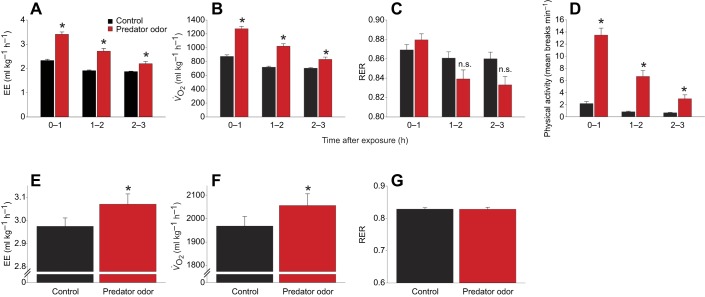Fig. 2.
Predator odor exposure increases energy expenditure, even after activity levels are controlled. (A–C) Exposure to predator odor increased energy expenditure (EE; A) and oxygen consumption (V̇O2; B), without significantly altering respiratory exchange ratio (RER; C). (D) Physical (horizontal) activity was also significantly increased. (E–G) When physical activity level was held constant (7 m min−1 treadmill walking), exposure to predator odor significantly elevated EE (E) and V̇O2 (F) during treadmill walking, without altering RER (G) (n=8). *Predator odor>control; n.s., not significantly different.

